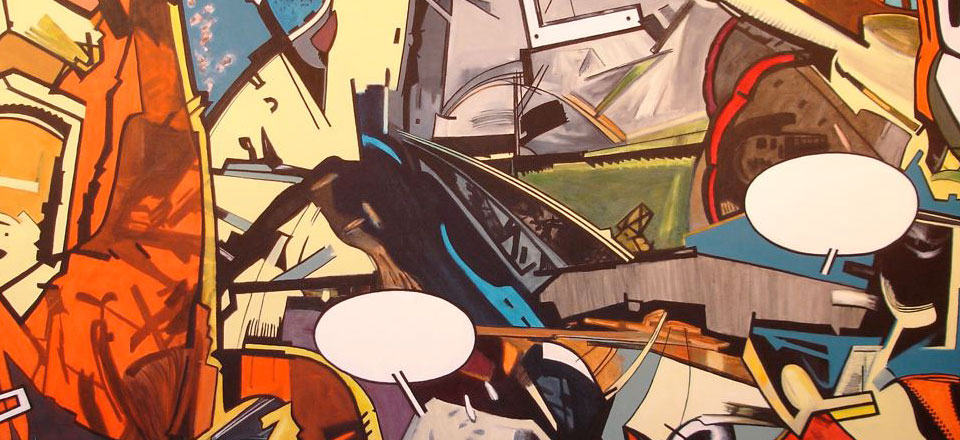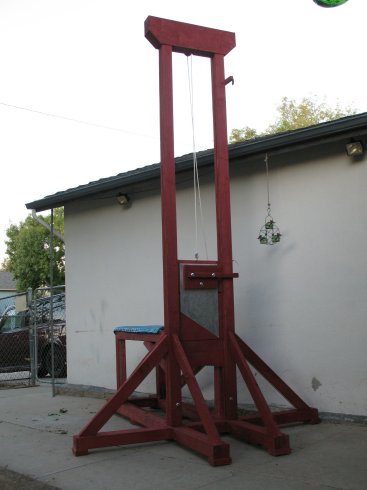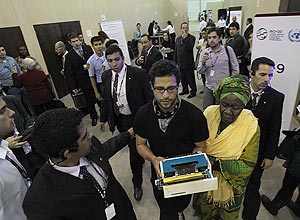[Novadic transmission from A, September 1, 2012]:
friends.
this morning i received a sweet letter from a NYC occupier which raises important questions for the struggle. riding on its wave, would like to discuss a bit the Body-Without-Organs (BwO) notion and the hot possibility of mathematically modeling the movement through non-linearity.
occupier letter.
"The key is in learning to embrace contradiction. It's the only way we can grow. Radical + reformist. Masculine + feminine. Rejecting the system + using the system to implode itself. Outreach + Inreach. The list is endless. I know it's personal for me, but I feel so strongly that if we blow up the binary, everything becomes so much more POSSIBLE. It's a pretty obvious thing that these divisions are created to keep us submissive. What do we do once we dissolve these imaginary lines?"
C.
this brings us to the exploration-experimentation that our collective has been conducting in the movement so far, namely with the use -and abuse, why not?- of pluripotential spaces. these zones are effectively TAZs elicited by organizers, whom "code" a given space with the right inscription (rules) and then present the instructions to the players; through this rune-like operator, trained organizers can optimize the emergence of flow (optimal experience) at any given loci, outdoor or indoor. the consequences are endless.
A.
time suspension.
~ "When you will have made him a body without organs,
then you will have delivered him from all his automatic reactions
and restored him to his true freedom." ~
A. Artaud (1947)
Fibonaci Arena (FA) is any given space coded with instructions that elicit flow (e.g. Salon, Magic Mountain). FAs are intentionally unintentional vortexes, a spiral-eliciting accident, which draws its theoretical basis on anarchy and the notion of BwO that Deleuze & Guattari introduce in their collaborative work. in those instances where play is elicited time is abolished.
play is flow & flow is play
"what is your name?" dialogues.
(...) existence means exposition to and adaptation of a full range of given norms, structures and boundaries (...)
(...) this does not lead to a loss of personality but to a construction of an artificial one: already before we are born we are categorized based on our genitals, which decide what kind of name is going to be imposed on us, Susan or Tom (...)
(...) a stratification of our bodies, which is created through the hierarchical order of society (...) Thousand Plateaus (...) continuous power relations amongst members of society (...) power where those at the top oppress the others
Mark
in illo tempore ~ "in that time" , or "once upon a time".
in order to break binaries, and thus promote a revolution in the logical framework that guides -- and ensnares -- Western thought it is suggested:
(1) that instead of "breaking" boundaries, revolutionaries seek to "dissolve" them by eliciting phase transitions :: from solid to liquid :: liquid time, flow :: ~ this method of engaging Empire discussed by OccupySunTzu acts on the links, on the spaces in between.
(2) this phase transition may be elicited through flash ~ liberations, i.e. collective processes of emancipation in public streets & squares :: similar to ancient tribal hierophanies :: regression to the undifferentiated state of BwO ::
(3) dissemination of Fibonaci Arenas.
the resulting kaleidoscopes are #novad-like supernovas.
occupyMathematics ~ "and they say you always hated math (...)"
to start thinking about how to mathematically model the movement, at this point of maturity and beyond, is probably the last thing that Empire wants us to do. from here on lies the suggestion that we OccupyMathematics.
check out mathematical approaches to model complex emergent behavior (eg, central nervous system;; ant colony;; traffic jams ;;) and these links with tricks from the trickster:
Sent from my soul
 Mapping the voyage of the Hippo.
Mapping the voyage of the Hippo.∞
[NOTES]:
The dynamics that manifest as revelations in the material zone or phase only comprise a small fraction of the dynamics in play. Most of the dimensional arena is active with immaterial transpects demonstrating what can be described as multiplicity, resistant to epistemology or the recursive. The key for the lead artist is to encourage or facilitate the transiting of evidence, of life, through the spatial layers we designate as free and open to our pluripotential phenomena.
In OAS we discovered in Week 2, for example, that a course need not exist to exist in substantiated iterations. We found, additionally, that timing can pronounce the extended, even epic, duration of a 4D artistic project, given a dedicated locus + chronos, as long as the witness(es) and presenter(s) share the space with a focal media array, including networked electronics attached to the web and database. As such, the spectacle is only activated by a combination of hard-, soft- + wetware [LOL], in the actual stage, with the virtual as both accompaniment and archive. In relation to experience, the transmission is conducted in a flux of casual and formal micro-environments. The environment has a time feature, and it is easily translated as "a moment" itself, although such a designation is incomplete.
The technical evaluation of the phenomena is hardly encompassing of the experience.
Another interesting anecdote involves the act of preparation for the transmission. Is such activity not also an invitation, or a calling? What if the calling IS the event?
∞
 Super Lucky Cat reappears to connect OASN1 & AFHGC.
Super Lucky Cat reappears to connect OASN1 & AFHGC.1. Lead artist wears a "red dirt" shirt from Kauai, to initiate a discussion of source material for artistic, organic staining processes.
2. Today's business section of the NY Times is provided as a substrate, but also as an acknowledgment of timeliness, and other relevant considerations affecting (or not) the artistic enterprise. The subject of materials is expanded to include "non-artist" materials.
3. The lead artist displays a large set of many types of painting tools, mostly brushes. Students are encouraged to choose several for painting with the coffee. The brushes serve as the point of origin for a conversation about the "life" of the artist's tool, and/or the partnership between the artist and the tool + the history of making that may be thought of as embedded in the tool through usage and application. [Introduction to Techne, time, craft traditions... (+)]
4. Many types of papers are introduced. Experiments on viability as substrate for medium, "pigment" and expressive means.
5. An array of large format (mostly floral) photographs are mounted around the classroom. We will paint on the museum board cut into window mattes, enclosing the photos. Many considerations. One of the photos (a rose) is displayed on a nice Italian easel at the door.
6. "Final" exercise will be to paint on very fragile light paper (multi-hued), which will buckle and otherwise dramatically respond to the coffee-paint.
7. Discussion about artists who use coffee as an important part of their exhibition practice (like Sara Sun, who has a show going currently at Governor's Island Art Fair - thanks for the heads-up Andrea; and Jayson Musson + Manning Williams). Discussion about coffee growing (political/economy).
 Clemens Poole + Shane Kennedy & other Hippo crew members talk story to a full Haus, Friday, August 31 at OASN1.
Clemens Poole + Shane Kennedy & other Hippo crew members talk story to a full Haus, Friday, August 31 at OASN1.∞
OASN1 reached an important marker with the "Voyage of the Hippo" program on Friday, August 31. The evening presentation, which consisted of a fantastic, compelling slideshow/movie sequence + Q&A + commentaries facilitated by Clemens Poole and long-time AFH anchor Shane Kennedy, realized our vision of how our "class" format would work in practice. At the conclusion of the talk, many of us walked to Tandem, a few blocks down Troutman in Bushwick, to continue the vibrant concourse over libations.
∞
 Interior shot of Pickthorn in Bushwick.
Interior shot of Pickthorn in Bushwick.We continue to make
friends in the neighborhood, like Jayson Musson, AKA Hennessy Youngman and the amazing ladies of Pickthorn. We are also beginning to establish strategic partnerships. OASN1 is now sponsored by both Wyckoff Starr and the vaunted Brooklyn Rail.
JenJoy Roybal is already proving invaluable, as she begins the process of scanning the domain for artist-teachers and relevant organizational/mission comparisons to/for our enterprise. She sent Chris & I
links that reveal possibilities neither of us had entertained prior. JenJoy is gifted with big vision.
∞
The discourse that is percolating in the novad pool is providing us with tremendous inspiration and seed-thought, moving forward. Coming in multiple forms (poems, images, sounds, movies, links, texts, notations, forwarded correspondence, system schematics, references, citations, equations, juxtapositions... [+]) the novadic inputs are fueling some OAS movements, refining threads, introducing new seams, expanding horizons, shifting PoVs & frames of reference [+]. Thank you, gamers!
∞
The
occupationalartschool [dot] com nexus is weekly undergoing facelifts, as we assess the proper format for that organ. For now, the preponderance of notices and documentation is being sited on the OAS Tumblr and in the OwA/OAS Facebook pages. The
OAS Twitter,
Pinterest and other social media are functional but rudimentary in our usage of them for a bit longer. The question at this point is whether to invent an entirely new framework for the virtual / actual interplay.
∞
Finally, the ripple effect from DisciplineAriel [Event 1, August 25, 2012] has only begun to evidence itself in our secondary co-lab phase. Stay tuned.

 Monday, September 3, 2012 at 09:55PM
Monday, September 3, 2012 at 09:55PM  Mapping the voyage of the Hippo.
Mapping the voyage of the Hippo. Clemens Poole + Shane Kennedy & other Hippo crew members talk story to a full Haus, Friday, August 31 at OASN1.∞
Clemens Poole + Shane Kennedy & other Hippo crew members talk story to a full Haus, Friday, August 31 at OASN1.∞


 admin |
admin |  Post a Comment |
Post a Comment |  novads,
novads,  occupational art school,
occupational art school,  update in
update in  DIY,
DIY,  collaboration,
collaboration,  collectives,
collectives,  community building,
community building,  demonstration,
demonstration,  design,
design,  discourse,
discourse,  residency,
residency,  salon,
salon,  transmissions,
transmissions,  updates,
updates,  zines
zines 













